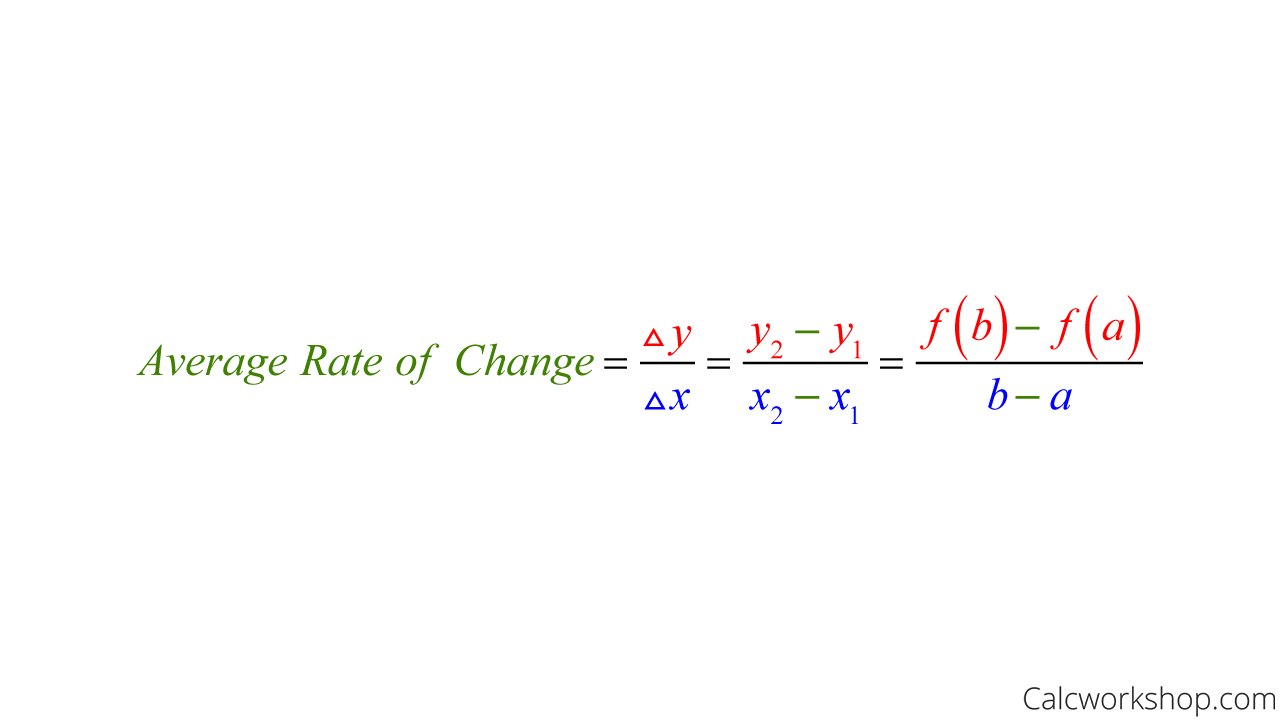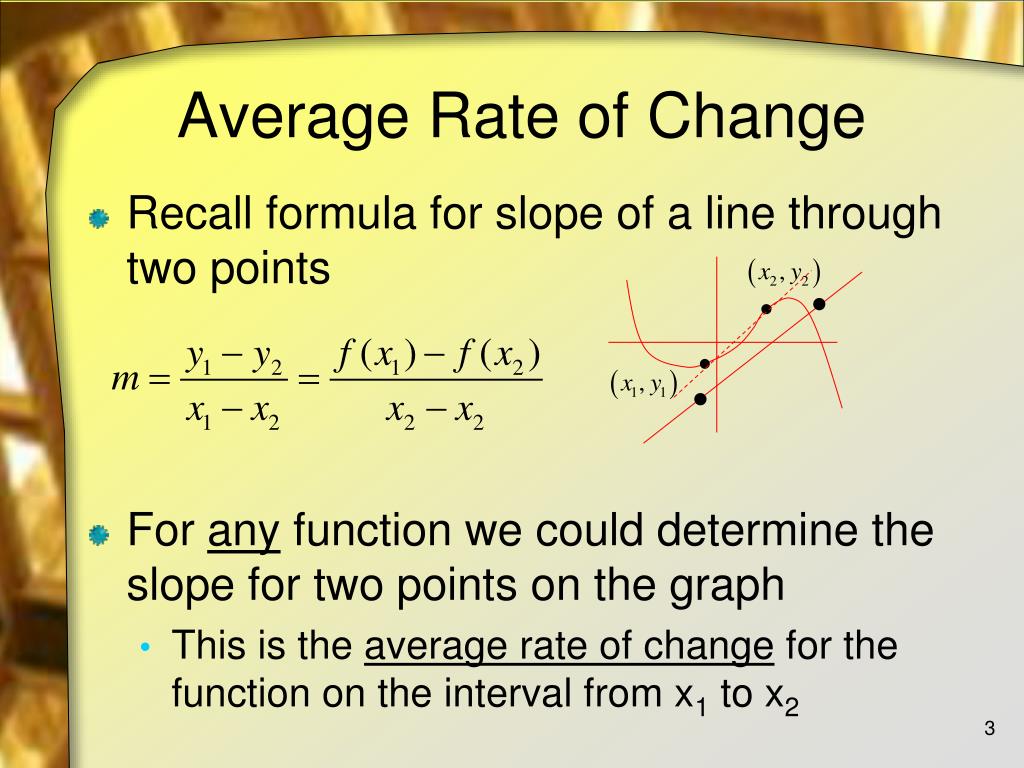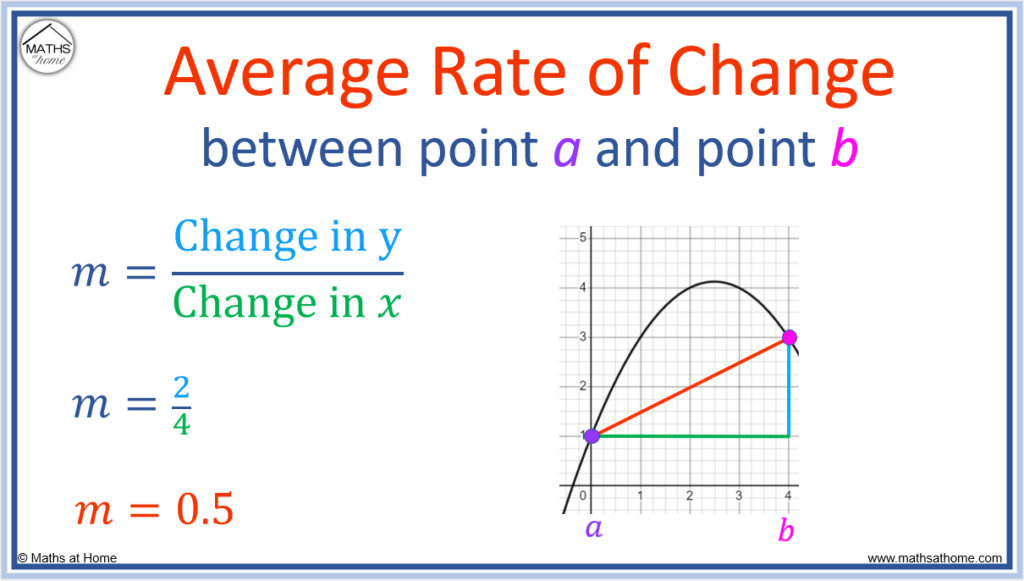Ever wondered how quickly things are changing around you? I mean, everything changes, right? From the price of your favorite coffee to the length of your hair (hopefully!), change is the only constant. But how do we *measure* that change? That's where the average rate of change comes in, and trust me, it's way cooler than it sounds!
Think of it like this: imagine you're driving from your place to your friend's across town. You don't go the *exact* same speed the whole time, do you? You might speed up on the highway, slow down in traffic, and stop at a light. But you can still figure out your *average* speed for the trip. That's essentially the average rate of change in action!
So, What *Is* The Average Rate Of Change?
Okay, let's get a little more specific. The average rate of change is simply a way to measure how much a quantity changes, on average, over a specific interval. It's like taking a snapshot of the "before" and "after" and figuring out the overall trend between those two points.
Think of it like a stock price. The stock market goes up and down all day, but what if you just want to know how much it changed between the opening bell and the closing bell? The average rate of change would give you that overall picture.
The Magic Formula (It's Not Scary, I Promise!)
Ready for the formula? Don't worry, it's super simple. Here it is:
Average Rate of Change = (Change in Output) / (Change in Input)
Whoa, formulas! Okay, let's break it down. Let's say we are measuring distance traveled, and how long it took.
Change in Output: This is how much the thing you're measuring *changed* between your two points (in our example, the distance you traveled).
Change in Input: This is the *difference* between your two points in time (in our example, how long you were driving).
Still hazy? Let’s put in some numbers!
Suppose you drove 100 miles in 2 hours. In that case...
Change in Output (distance): 100 miles
Change in Input (time): 2 hours
Average Rate of Change = 100 miles / 2 hours = 50 miles per hour!
See? Easy peasy! That's your average speed, or in other words, your average rate of change of distance over time.
Why Should You Care?
Okay, so you can calculate it. But why bother? Well, understanding the average rate of change is useful in tons of real-world situations!
- Business: Companies use it to track sales growth, profit margins, and customer acquisition rates. Is your business growing faster or slower than last year? Average rate of change can tell you!
- Science: Scientists use it to study population growth, the speed of chemical reactions, and the rate of radioactive decay. Think about climate change - scientists are tracking the average rate of change of the Earth's temperature.
- Finance: Investors use it to analyze the performance of stocks, bonds, and other investments. Is a stock's price going up faster than the market average?
- Everyday Life: You can use it to track your own progress, like your weight loss journey, your savings goals, or how many books you read each month. Are you meeting your goals?
Average Rate of Change Vs. Instantaneous Rate of Change
Now, I gotta throw a curveball at you: the average rate of change isn't the *whole* story. Sometimes, you want to know how something is changing at a *specific* moment in time. This is called the *instantaneous* rate of change. Imagine you are driving down the highway, and want to know exactly how fast you are going at a specific moment in time; that is instantaneous rate of change.
Think back to our road trip example. The average rate of change tells you your average speed for the whole trip. But what if you wanted to know your speed at, say, exactly 30 minutes into the drive? That's where the instantaneous rate of change comes in. This is where calculus comes in!
But don't worry about that for now! The average rate of change is a great starting point for understanding how things change over time.
Putting It All Together
So, there you have it! The average rate of change is a simple but powerful tool for measuring how things change. Whether you're tracking your business performance, analyzing stock prices, or just curious about the world around you, understanding the average rate of change can give you valuable insights.
The next time you hear about something changing, ask yourself: "What's the average rate of change?" You might be surprised at what you discover! Now go forth and measure some change!





